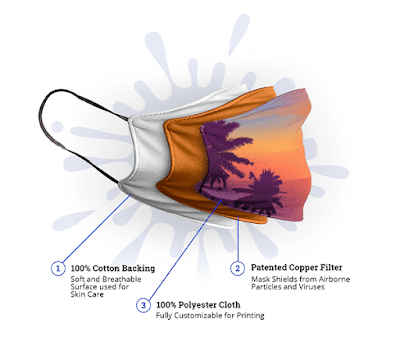Sumo is a form of competitive full-contact wrestling where a rikishi (wrestler) attempts to force his opponent out of a circular ring (dohyō) or into touching the ground with any body part other than the soles of his feet (usually by throwing, shoving or pushing him down).
Topmago is writing today for some new face masks at our store, Japanese Sumo Face Mask.
Japanese Sumo Face Mask Design
Two Japanese Sumo are on a fight, check this Japanese Sumo Face Mask Washable now at Topmago !
 |
| Japanese Sumo Face Mask Washable |
 |
| Japanese Sumo Face Mask Washable |
Another one is also about a fight between 2 Japanese Sumo, but in a black face mask, check this Japanese Sumo Face Mask now at Topmago !
This below design is about 4 funny Japanese Sumo, check this Japanese Sumo Fabric Face Mask now at Topmago !
 |
| Japanese Sumo Fabric Face Mask |
More Details About Japanese Sumo
Sumo originated in Japan, the only country where it is practiced professionally, where it is considered the national sport. It is considered a gendai budō, which refers to modern Japanese martial arts, but the sport has a history spanning many centuries. Many ancient traditions have been preserved in sumo, and even today the sport includes many ritual elements, such as the use of salt purification, from Shinto.
Life as a wrestler is highly regimented, with rules regulated by the Japan Sumo Association. Most sumo wrestlers are required to live in communal sumo training stables, known in Japanese as heya, where all aspects of their daily lives—from meals to their manner of dress—are dictated by strict tradition.
From 2008 to 2016, a number of high-profile controversies and scandals rocked the sumo world, with an associated effect on its reputation and ticket sales. These have also affected the sport's ability to attract recruits. Despite this setback, sumo's popularity and general attendance has rebounded due to having multiple yokozuna (or grand champions) for the first time in a number of years and other high-profile wrestlers such as Endō and Ichinojō grabbing the public's attention.
Professional Sumo :
Professional sumo is organized by the Japan Sumo Association. The members of the association, called oyakata, are all former wrestlers, and are the only people entitled to train new wrestlers. Most practicing wrestlers are members of a training stable (or heya) run by one of the oyakata, who is the stablemaster for the wrestlers under him. In 2007, 43 training stables hosted 660 wrestlers.
All sumo wrestlers take wrestling names called shikona (四股名), which may or may not be related to their real names. Often, wrestlers have little choice in their names, which are given to them by their trainers (or stablemasters), or by a supporter or family member who encouraged them into the sport. This is particularly true of foreign-born wrestlers. A wrestler may change his wrestling name during his career, with some wrestlers changing theirs several times.
Sumo wrestling is a strict hierarchy based on sporting merit. The wrestlers are ranked according to a system that dates back to the Edo period. Wrestlers are promoted or demoted according to their performance in six official tournaments held throughout the year. A carefully prepared banzuke listing the full hierarchy is published two weeks prior to each sumo tournament.
In addition to the professional tournaments, exhibition competitions are held at regular intervals every year in Japan, and roughly once every two years, the top-ranked wrestlers visit a foreign country for such exhibitions. None of these displays is taken into account in determining a wrestler's future rank. Rank is determined only by performance in grand sumo tournaments (or honbasho).



















